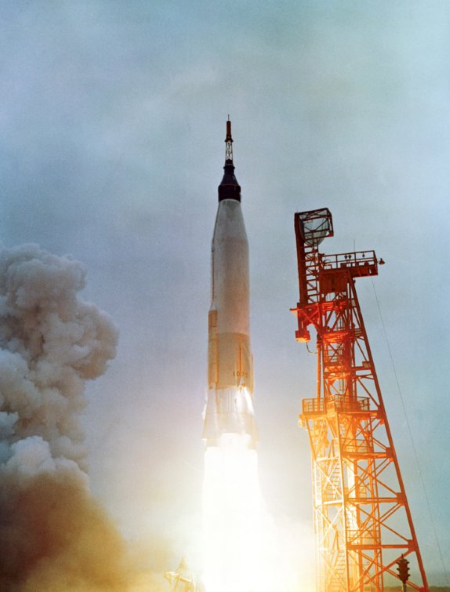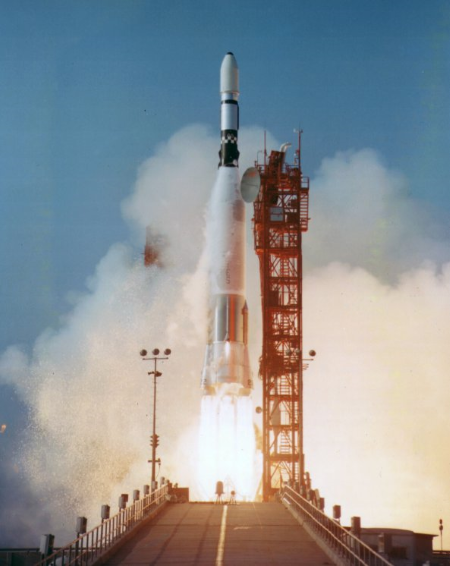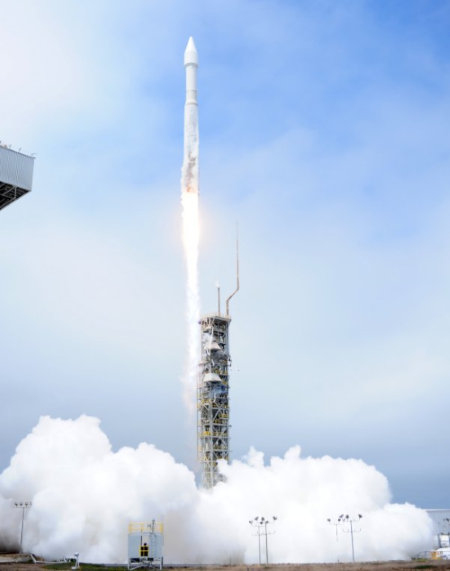As one of the most iconic rockets in use by the space and defense industries within the United States, Atlas is known for many things.
The rocket is most known for its use in the Mercury launch where astronauts were sent into orbit.
The Atlas name is also associated with satellite delivery as it has been a dependable launch system since its development.
Atlas started out as a plan to create missiles powered by rockets.
Just after the Second World War, leaders in the US saw a need for winged, long range missiles, and the Atlas concept was brought into existence.
What started as a simple rocket-powered missile quickly developed into the first US ICBM project. Today, the Atlas rocket program is still in full swing.
Related Article – 5 Best Low Time Pilot Jobs With 250 Hours
The idea and development of the Atlas rocket began in 1945 when the Armed Forces asked members of the aerospace field to develop concepts for long range missiles.
The USAAF had plans to develop a missile capable of carrying a payload 5,000 miles from the point of launch.
It did not take long, a mere few months, in fact, to settle on two primary ideas to solve the problem.
One idea involved a sub-sonic jet-propulsion system and other was a supersonic rocket-powered design.

In 1946, less than a year after initial plans commenced, USAAF decided to allow Convair the contract to further develop both concepts.
After a year of research and development, National defense budget cuts were introduced, and the program lost much of its funding.
Convair’s contract was cancelled in 1947 as a result.
Despite the cancellation, Convair was allowed to deplete funds that had been allocated to them which the company used to complete three projects still in development.
Related Article – Instrument Proficiency Check (IPC): 4 Things You Need To Know
In 1951, with the Korean war underway, renewed interest in the development of long-range weapons systems opened doors for funding to begin once again.
The United States Air Force decided to develop the rocket-powered concept and granted a renewed contract to Convair in 1953.
A mere 2 years later, in 1955, President Eisenhower put in orders for Atlas rockets, dubbing the program a top priority for national security.
It only took Convair one year to begin testing systems related to the rocket’s propulsion and electrical.
The construction of the first Atlas rockets was carried out by multiple companies within the aeronautics industry.
Convair was responsible for coming up with lightweight airframe concepts and construction, as well as putting all the pieces together.
Atlas’ rockets, nosecone, and guidance system was manufactured by North American Aviation, GE, and A.C. Spark Plug Co., respectively.
Atlas’ airframe design was revolutionary at the time of its development and it drew a lot of attention from industry experts as well as competing companies.
The thin stainless-steel shell was designed in such a way that the pressure from the rocket’s fuel tank created enough structural integrity while being extremely lightweight.
The Atlas rocket’s basic design did not change in nearly 50 years.
It has two sections that work together to allow the rocket to launch into Earth’s orbit.
The booster section contains two rocket engines while the sustainer section has one. All three fire together at launch and work in unison for 2 minutes, until the booster section detaches.
Related Article – Airline Transport Pilot Certificate (ATP): 4 Things You Need To Know
In 1957, the first Atlas missiles were being tested. These first models were known as ‘Series A’ and they lacked the sustainer section.
Series A Atlas rockets were 74 x 10’ and only capable of travelling 600 miles.
However, with the added weight of a warhead in place, the range provided by the booster section was reduced to a mere 60 miles.
The Atlas Series A inaugural launch ended in a failure that came with an important lesson.
The flight was 24 seconds long and only achieved an altitude of approximately 10,000 ft.
When the rocket began spiraling toward Earth, the first Series A rocket self-destructed.
The failure put all doubts about the structural integrity of the rocket to rest as it maintained its frame and outer shell throughout the intense stress of its tumble.
Following the first Series A flight, 7 more rockets were launched over the course of a year.
1958 and 1959 saw Series B and Series C models launched, as well as what would be the first ICBM for the US, the model D. Model D Atlas rockets were stationed at the Vandenberg Air Force base, in California, in late 1959.
Just weeks after their arrival, a test launch was carried out and the program became fully operational.

While the Atlas ICBM program was fully underway, so too was the space program.
In late 1958, just months before the first ICBM was finalized, a model B Atlas rocket delivered a communications satellite into Earth’s orbit.
Related Article – 12 Runway Markings and Signs Explained By An Actual Pilot
In 1959, nuclear Atlas ICBMs were installed at several Air Force bases across the US.
The missiles were designed to sit inside of silos beneath the surface of the ground until launch when they are brought to the surface with elevator systems built into each silo.
In 1966, the original batch of Atlas ICBMs were replaced by an updated design using sold fuel.
The original ICBMs were then used for satellite deployments, by NASA and the U.S. Air Force.
In 1962, Project Mercury carried the first American, John Glenn, Jr., into Earth’s orbit.
The rocket that powered that iconic mission was a variation of the model D which had been retrofitted to be safe for human passengers.
The Atlas LV-3B carried astronauts to space 3 times in the course of 2 years.
In the years since Atlas’ first launches into space, the rocket has undergone many changes.
These changes have allowed Atlas rockets to carry much heavier loads into space and for much longer distances.
A few of the changes made include an elongated tank, more capable rockets, and better computing.
To date, Atlas rockets have delivered many spacecraft and planetary probes including to Jupiter, Saturn, Venus, and the moon.
After 70+ years in operation, Atlas is still undergoing changes.
For instance, Atlas V regularly delivers satellites into orbit, with a notable recent launch taking place in August when the 80th Atlas launch brought a six-satellite constellation into geostationary orbit.
Atlas V is the most effective Atlas rocket to date, with the 551 variation being the most powerful.
Related Article – 14 Taxiway Markings, Signs, and Lights Explained By An Actual Pilot
The five solid rocket motors are more than capable of delivering upwards of 20,000 lbs. into orbit.

